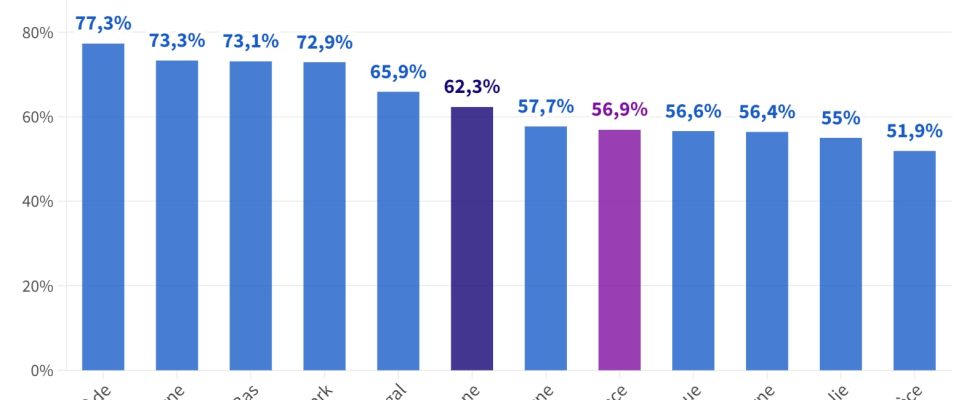The question of senior employment once again at the center of debates. Employers and unions are participating this Monday in a new – and probably last – negotiation session in order to find an agreement on “life at work” and the employment of seniors. An issue which was particularly highlighted during the debates on pension reform and the increase in the legal retirement age to 64 last year: the government assuring that this would improve the situation of the oldest in the workforce. labor market, its opponents highlighting the low employment rate up to 62 years old today.
If the means to resolve this problem diverge, the observation is unanimous: the majority of seniors are still too excluded from the world of work. A study of the Directorate for the Animation of Research, Studies and Statistics (Dares) of the Ministry of Labor, published last September, established the employment rate of people aged 55 to 64 at 56.9% in 2022. Enough to place France in 17th place within the European Union, with a figure lower than the EU average, and above all very far from those of countries like Sweden (77.3%), Germany (73.3%) or the Netherlands (73.1%).
A distance from employment from the age of 60
This clear gap cannot be explained solely by the failures of the French system. In 2022, the legal retirement age in France was then set at 62 years, while it was 65 years in Germany, 66 years in the Netherlands or 67 years in Denmark. This explains a lower employment rate in France in the age group between 60 and 64 years old. But this distancing of seniors from work is already observed in France before the age of 64, or even 62. Thus, in 2022, the employment rate for 60-64 year olds only reached 36.2%, compared to 76.4% for 55-59 year olds.
This distance from employment is all the more visible in certain socio-professional categories. Thus, in 2022, only 21.1% of workers aged 60 to 64 or 30.5% of employees were employed alone (not combined with a pension), compared to 45.2% of managers and upper intermediate professions, or 45 .7% of artisans, traders, and business leaders.
A problem that arises even earlier. Between 55 and 59 years old, 29.4% of workers and 24.7% of employees were also neither employed nor retired, compared to 10.2% of managers and 13.7% of intermediate professions. In this age group in particular, employees and workers were three times more often unemployed than managers, again according to Dares data.
“Laborious” negotiations
In order to improve the employment rate of seniors, the social partners have been discussing solutions since the end of December. Last week, employers submitted to the union organizations a draft agreement serving as a basis for current negotiations, which are expected to continue late into the night this Monday, or even continue this Tuesday, April 9. This Monday morning was devoted to examining the first of five chapters, relating to career paths, career-long interviews and retraining, with unions seeking in particular to obtain compensation for employees for the increase in the retirement age at 64. The negotiations are “laborious”, Olivier Guivarch, negotiator for the CFDT, estimated this Monday afternoon.
The following chapters, on the prevention of attrition at work and on career endings, must then be examined. On these points also, the employers could amend their project according to union demands. The draft agreement notably creates an “experience enhancement contract” to facilitate the hiring of older unemployed people. Initially called “senior permanent contract”, this contract could be terminated by the employer as soon as the employee can retire at full rate. A red line for unions.
Still according to the employers’ project, social dialogue on the employment and working conditions of seniors must be compulsory in companies with 300 or more employees. The employers had initially set the threshold at more than 1,000, but the CFDT is asking that it be lowered to 50. If the social partners manage to find an agreement, the government has undertaken to transcribe this text into law. Even if everything could be shaken up again by the project to reform and tighten unemployment insurance announced by Gabriel Attal.
